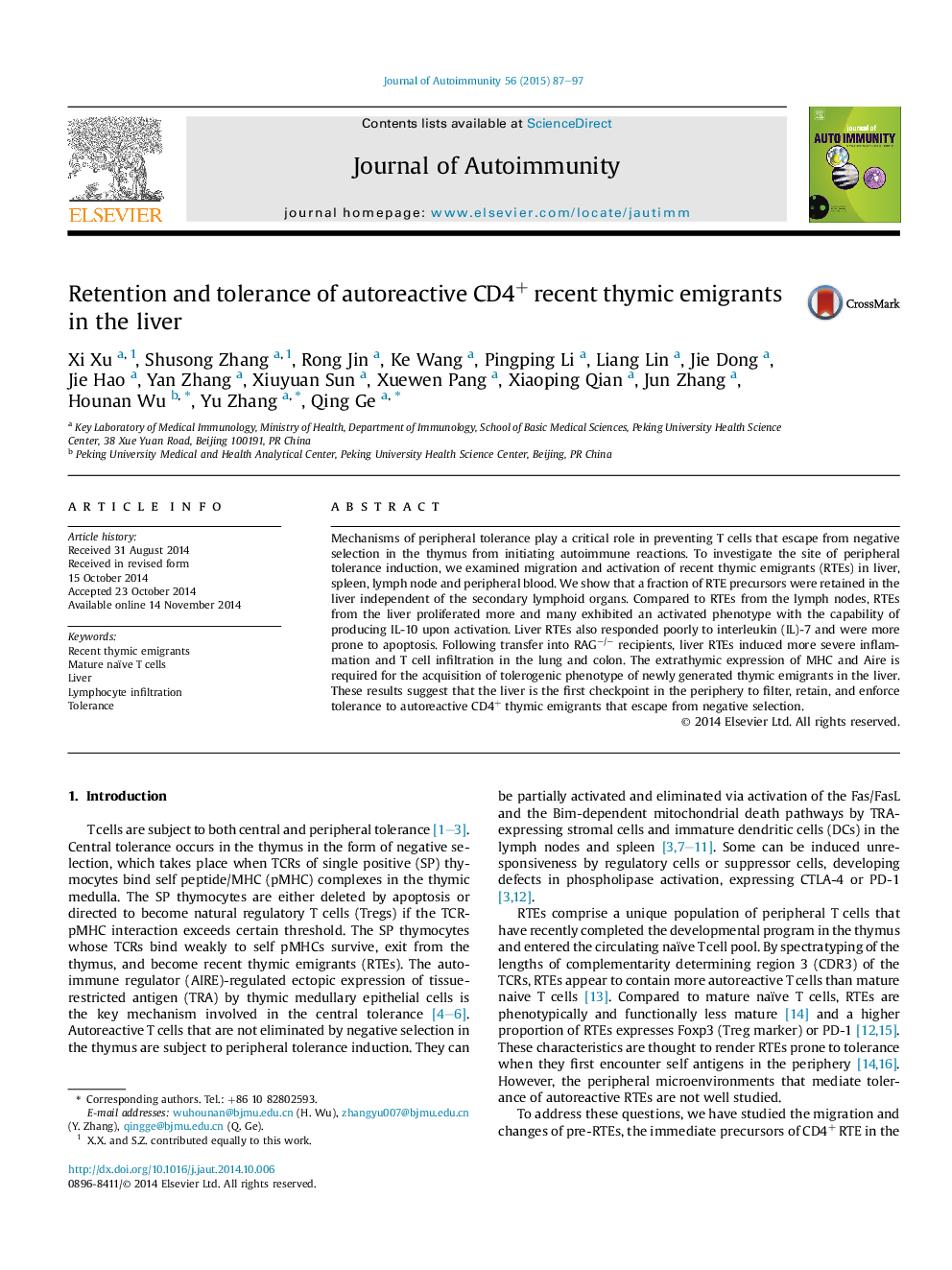| Article ID | Journal | Published Year | Pages | File Type |
|---|---|---|---|---|
| 6119252 | Journal of Autoimmunity | 2015 | 11 Pages |
Abstract
Mechanisms of peripheral tolerance play a critical role in preventing T cells that escape from negative selection in the thymus from initiating autoimmune reactions. To investigate the site of peripheral tolerance induction, we examined migration and activation of recent thymic emigrants (RTEs) in liver, spleen, lymph node and peripheral blood. We show that a fraction of RTE precursors were retained in the liver independent of the secondary lymphoid organs. Compared to RTEs from the lymph nodes, RTEs from the liver proliferated more and many exhibited an activated phenotype with the capability of producing IL-10 upon activation. Liver RTEs also responded poorly to interleukin (IL)-7 and were more prone to apoptosis. Following transfer into RAGâ/â recipients, liver RTEs induced more severe inflammation and T cell infiltration in the lung and colon. The extrathymic expression of MHC and Aire is required for the acquisition of tolerogenic phenotype of newly generated thymic emigrants in the liver. These results suggest that the liver is the first checkpoint in the periphery to filter, retain, and enforce tolerance to autoreactive CD4+ thymic emigrants that escape from negative selection.
Related Topics
Life Sciences
Immunology and Microbiology
Immunology
Authors
Xi Xu, Shusong Zhang, Rong Jin, Ke Wang, Pingping Li, Liang Lin, Jie Dong, Jie Hao, Yan Zhang, Xiuyuan Sun, Xuewen Pang, Xiaoping Qian, Jun Zhang, Hounan Wu, Yu Zhang, Qing Ge,
